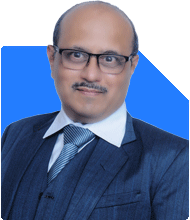I have taken SBI Life Retire Smart Plus plan in the year 8 March 2024 paid two premium off Rs 1000000 each now i want to discontinue the scheme will there be any penalty for the disconnection or is there any suggestion as i will not be able to pay the further three premiums of 3000000
Ans: You have made a very important and timely decision to review your insurance-linked investment. It is good that you are evaluating the SBI Life Retire Smart Plus plan early. Many investors continue such policies without full awareness of their costs and returns. Your question shows financial awareness and willingness to make better choices, which is the right step towards long-term growth.
» Understanding the SBI Life Retire Smart Plus Plan
This plan is a unit-linked pension policy. It invests your premium partly in market-linked funds and partly in insurance coverage. While it is presented as a “retirement” or “pension” plan, it mainly functions like a ULIP (Unit Linked Insurance Plan) with additional conditions.
Your annual premium is Rs 10,00,000, and you have already paid two instalments — total Rs 20,00,000. The plan has a five-year premium payment term, and you are finding it difficult to pay the remaining three premiums of Rs 30,00,000. This is a valid concern because ULIP-type pension plans are not flexible.
Before you take any decision, it is important to understand how surrender or discontinuation works for this kind of plan.
» Lock-in Period and Discontinuance Clause
All ULIP-type pension plans have a five-year lock-in period. This means if you stop paying before completing five years, the policy is treated as discontinued.
When you stop paying before five years:
– The insurer will move your fund value to a discontinued policy fund.
– This fund earns a fixed return (usually around 3–4% per year, depending on regulation).
– The insurer deducts a small discontinuance charge as per policy terms.
– You will not get your money immediately. You will receive it only after five policy years from the start date (i.e., after March 2029 in your case).
So if you stop paying premiums now, your Rs 20,00,000 will remain locked till 2029.
The discontinuance charge is based on the policy year and fund value, but it is usually capped at Rs 6,000. So the penalty is not huge in rupee terms, but the opportunity cost of keeping funds idle for five years is significant.
» If You Continue the Plan
If you continue, you will pay another Rs 30,00,000 over three years. You will complete the five-year lock-in and can then withdraw partially or convert to annuity.
But you must understand that such ULIP-based pension plans have many limitations:
– High allocation charges, policy admin fees, and fund management fees reduce your net return.
– Pension ULIPs are restrictive at maturity. They do not allow full withdrawal; at least two-thirds of the corpus must be used to buy an annuity.
– Annuity returns are taxable and usually very low.
– The flexibility to manage or switch funds is limited compared to mutual funds.
Continuing the plan makes sense only if you are comfortable paying large premiums and are okay with low flexibility and moderate returns.
» If You Stop Paying Premiums
Since you cannot pay further premiums, the plan will move to discontinued status.
– Your existing fund value will remain invested in the discontinued fund till 2029.
– You will receive the accumulated amount with minimal returns after five years.
– You can then reinvest that maturity amount in mutual funds for better long-term growth.
Stopping the policy now will not erase your existing money, but it will slow its growth. Still, this option is practical because you cannot continue heavy premiums.
» Can You Surrender Immediately?
You can surrender, but since it’s within the first five years, the same discontinuance rule applies. You cannot get the surrender value instantly. It will be paid only after the lock-in period ends.
After March 2029, the insurer will release the fund value plus interest from the discontinued policy fund.
So, yes, you can stop paying now, but there is a five-year wait before you receive your funds.
» Option to Make the Policy Paid-up
Some plans allow making the policy “paid-up” after paying at least three years of premiums. But in your case, you have paid only two years. Hence, the paid-up option is not available yet.
If you had paid for three years, you could have made it paid-up and let the invested amount continue without further payments till maturity.
Since you cannot pay a third premium, your plan will automatically move to discontinued status.
» Impact of Discontinuing Now
The main effect will be:
– Your fund will shift to a discontinued policy fund.
– Your future investment will stop.
– Returns will be low (3–4% per annum).
– You will lose compounding benefit for the next five years.
– You will get the amount after completion of five years from start date.
However, this is still better than continuing a high-cost policy you cannot afford. Continuing without affordability will strain your finances and disrupt other goals.
» What You Can Do After Surrender Payout
Once you receive the payout in 2029, reinvest the full amount in mutual funds through a systematic transfer plan (STP).
Invest in diversified categories like flexi cap, large and mid cap, and multi cap funds. These funds offer higher growth potential, full liquidity, and flexibility to switch between funds if needed.
ULIPs like SBI Life Retire Smart Plus lack these advantages.
When you invest through regular mutual funds with a Certified Financial Planner and MFD, you receive ongoing advice, portfolio monitoring, and goal alignment.
This active involvement is the key reason why mutual funds perform better for retirement and wealth creation.
» Why ULIPs Are Less Suitable for Retirement Wealth
Many investors believe retirement ULIPs are safe and tax-efficient, but they have hidden inefficiencies:
– High charges in initial years reduce invested value.
– The surrender rules make them inflexible.
– Annuity requirement at maturity limits withdrawal freedom.
– Annuity income is taxable every year.
– Performance depends on limited internal fund options, which may not beat inflation consistently.
In contrast, mutual funds are transparent, flexible, and liquid. You can start, stop, or switch SIPs anytime. They also provide higher growth potential through active fund management and diversified exposure.
Therefore, it is wise to shift from a ULIP-based pension plan to mutual funds after the lock-in ends.
» Better Strategy for You Now
You cannot change the past two premiums. But you can control the next step.
– Stop paying further premiums immediately.
– Let the policy get discontinued.
– Wait till March 2029 to receive the fund value.
– Use that amount to start mutual fund SIPs aligned to your retirement goal.
During these five years, you can also start new mutual fund investments now, even while the discontinued policy fund remains parked. This way, you do not lose time.
Start monthly SIPs through a Certified Financial Planner in a mix of diversified funds. Even Rs 25,000 per month can build a strong retirement corpus over the next decade.
» Importance of Working with a Certified Financial Planner
Investing through a Certified Financial Planner helps you align every rupee with your goals.
Unlike direct investments, where investors must manage everything alone, a CFP and MFD combination offers continuous tracking and rebalancing.
Many investors think direct plans save cost. But direct plans lack expert support, ongoing guidance, and behavioural discipline. Mistakes in fund selection, timing, or redemption often cause bigger losses than any commission difference.
Regular plans through Certified Financial Planners create accountability and ensure portfolio adjustments in changing markets.
» Protecting Your Other Financial Goals
Make sure your insurance coverage is separate from investments. For life protection, buy a pure term insurance plan. It is cheap, transparent, and effective.
Never depend on ULIPs for protection. Their insurance coverage is minimal compared to need.
Also, keep a proper health insurance plan for your family. It prevents the need to redeem investments during medical emergencies.
Build a small emergency fund equivalent to six months’ expenses in a liquid mutual fund. This will keep you safe during job breaks or unexpected costs.
» Avoid Common Mistakes
Many investors surrender such policies in panic and then park the money in bank FDs. That reduces long-term returns.
When your discontinued fund releases the amount in 2029, channel it into mutual funds instead of fixed deposits.
Avoid mixing investment and insurance again in the future. Always keep them separate. Insurance protects life. Mutual funds grow wealth.
Also, avoid high-cost pension ULIPs or endowment policies in future. They often look attractive with “guaranteed” or “retirement” words, but they rarely beat inflation.
» Tax Aspects of Surrender
Surrendering before five years may have tax impact. The tax benefits you may have claimed under Section 80C for the premiums paid (up to Rs 1.5 lakh per year) will become taxable in the year of discontinuance.
When you receive the fund value in 2029, it may also be taxable based on your income tax slab then.
Still, the tax impact is a one-time event. The long-term benefit of freeing your funds from a low-performing ULIP is much higher.
» Finally
Your decision to discontinue is practical and financially wise. You have already invested Rs 20,00,000. Now, instead of forcing another Rs 30,00,000 into a rigid plan, you are choosing flexibility and growth.
– Stop further premiums now.
– Let the policy move to discontinued status.
– Wait for 5 years to receive your amount.
– Reinvest it fully in mutual funds through a Certified Financial Planner.
– Do not buy ULIP or pension-linked insurance again.
– Keep life insurance and investment separate.
– Begin SIPs immediately in diversified funds for your long-term goals.
This shift will bring liquidity, transparency, and higher compounding benefits to your financial life.
Best Regards,
K. Ramalingam, MBA, CFP,
Chief Financial Planner,
www.holisticinvestment.in
https://www.youtube.com/@HolisticInvestment





























